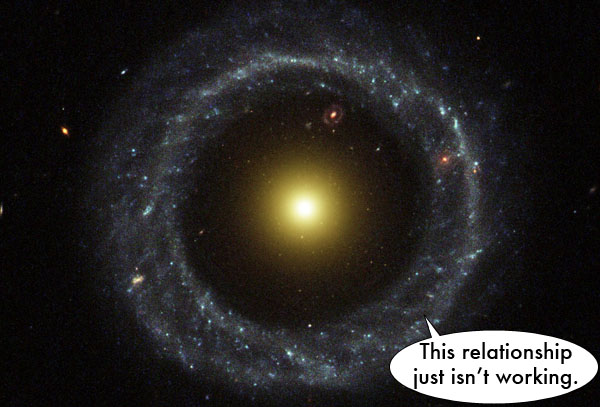How Hubble Made the Law
Before 1929, it was generally believed that the universe was static, or at least moving apart at a constant speed. Even Einstein was pushing for a steady state model of the universe in his theory of relativity. However, Edwin Hubble made a startling discovery -- the universe is actually accelerating apart. Every galaxy is accelerating away from us, and we're accelerating away from each galaxy.
Hubble also discovered a simple relationship between how far away a galaxy is and how quickly it's moving away from us:
v = H0×D
We usually measure a galaxies speed v in km/s and its distance D in Megaparsecs (Mpc). H0 is the expansion rate: Hubble Constant, usually measured in km/s/Mpc. This number does change over time, but it's currently measured around 70 - 75 km/s/Mpc.
Finding Velocity

Not every galaxy is moving away from us; some of our closer, more loving neighbors are being accelerated towards us due to gravity. Overall, though, we see most of the galaxies moving away. This ring galaxy, called Hoag's Object, is about 600 million light years away (183 Mpc), so we expect it to be receding very fast. Just how fast is it getting away from us?
Solution
Don't worry; they get harder than this. H0=70, and D=183, so:
v = 70×183
and we see that this galaxy is running away at a breakneck 13,000 km/s.